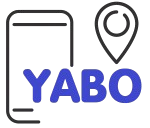Mini Grid Development

Type: Consulting and Development.
Key Products for Sale
- Custom Mini Grid Solutions
- Installation and Maintenance Services
- Energy Management Software
- Consulting Services on Energy Efficiency
Technology Considerations
- Renewable Energy Sources (Solar, Wind, Biomass)
- Energy Storage Systems (Batteries)
- Smart Grid Technology
- Advanced Metering Infrastructure (AMI)
- Backup Generators (optional)
Market for the Products
- Rural and Peri-urban Communities
- Small and Medium Enterprises (SMEs)
- Agricultural Enterprises
- Schools, Clinics, and Community Centers
- Government and Non-Governmental Organizations (NGOs)
Key Inputs into the Business
- Materials: Solar panels, wind turbines, biomass generators, batteries, inverters, transformers, cables, and meters.
- Labour: Engineers, technicians, administrative staff, sales and marketing personnel.
- Equipment: Installation tools, testing equipment, transport vehicles.
- Software: Energy management systems, customer management systems.
Product Preparation Process
- Feasibility Study: Assess the energy needs of the target community, resource availability, and financial viability.
- Design: Develop a tailored mini-grid design based on the feasibility study.
- Procurement: Source high-quality materials and equipment.
- Installation: Set up the mini-grid infrastructure, including renewable energy sources, storage, and distribution systems.
- Testing and Commissioning: Ensure all systems are operational and meet quality standards.
- Maintenance: Provide ongoing support and maintenance services.
Quality Considerations
- Use of high-quality, durable materials and equipment.
- Compliance with international and local standards.
- Regular maintenance and prompt troubleshooting.
- Customer feedback mechanisms to improve services.
Cost of Investment
- Feasibility Study: KES 100,000
- Design and Planning: KES 100,000
- Procurement of Materials:
- Solar panels: solar panel prices in Kenya depend on the brand, capacity, and installation specifications. For a 100W to 300W solar panel, prices typically range from KES 30,000 to KES 150,000 ($275 to $1,375). However, some panels can be as affordable as KES 12,500.
- Batteries: KES 40,000 100,000
Inverters and transformers: The cost of a solar inverter in Kenya varies based on system capacity, inverter and battery capacity, and brand. Prices typically range from Ksh. 200,000 to Ksh. 1.5 million. Consider your specific needs and compare prices and features from different brands to ensure the best value. While cost is important, prioritize quality and reliability for optimal performance and longevity. - Cables and meters: KES 70,000
Operational Infrastructure: KES 50,000
- Office setup: KES 10,000 ( This is optional as one can work from home)
- Storage facility: KES 20,000
- Workshop: KES 10,000
- Deliveries: KES 10,000
Required Operational Infrastructure
- Office space for administrative and technical staff. (optional)
- Storage facility for materials and equipment. (optional)
- Workshop for equipment assembly and repair.
- Vehicles for transportation and on-site service delivery.
Most Suitable or Viable Location of the Business
- Proximity to target rural and peri-urban areas in Kenya.
- Accessibility to major transport routes.
- Availability of skilled labor.
Potential Sources of Investment Capital
- Personal savings and loans.
- Grants from government and NGOs.
- Loans from banks and microfinance institutions.
- Equity investment from venture capital firms.
- Crowdfunding platforms.
Requirements for Effective Management
- Experienced management team with expertise in energy solutions.
- Skilled technical staff with knowledge of renewable energy technologies.
- Robust financial management system.
- Effective customer relationship management (CRM) system.
- Continuous training and capacity building for staff.
Role of Mobile Phone and ICT in the Business
- Mobile apps for customer billing and support.
- Remote monitoring and management of mini-grid systems.
- Use of ICT for data collection and analysis.
- Marketing and customer engagement through social media and mobile platforms.
Statutory Regulations and Licences
- Licensing from the Energy Regulatory Commission (ERC).
- Environmental Impact Assessment (EIA) approval.
- Compliance with the Kenya Bureau of Standards (KEBS) for equipment.
- Local county permits and approvals.
Pricing
- Initial Connection Fee: KES 10,000 – KES 20,000
- Monthly Subscription: KES 500 – KES 2,000 based on consumption.
- Maintenance Fees: KES 1,000 annually per household/business.
Profitability
- Revenue from connection fees and monthly subscriptions.
- Additional revenue from consulting and maintenance services.
- Potential for expansion to new areas increasing the customer base.
- Expected ROI within 3-5 years depending on scale and efficiency.
Next Steps to Take
- Market Research: Conduct detailed market research to identify potential areas for mini-grid development.
- Business Plan: Develop a comprehensive business plan with financial projections.
- Partnerships: Establish partnerships with technology providers, financial institutions, and government agencies.
- Pilot Project: Implement a pilot project to demonstrate feasibility and attract investment.
- Scale Up: Use lessons learned from the pilot to scale up operations to additional communities.

